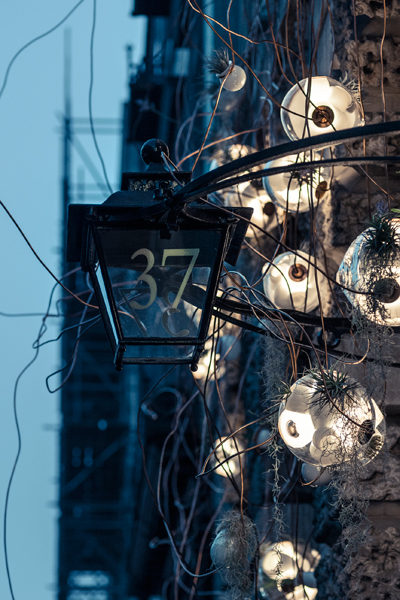|
Glass orbs and nuggets by Vancouver-based maker Bocci played among the artefacts at the 18th-century home of antique dealer Mallett This month, one of the UK’s oldest antique dealers opened it doors to the London Design Festival crowd, showcasing four installations by Vancouver-based glassmaker Bocci. Mallett, housed in an 18th-century townhouse in Mayfair, is a specialist in sourcing antique furniture and objects for the world’s top museums, and its rooms are crammed with curiosities from all eras. Bocci’s task was to place contemporary design in the unusual setting, in a way that would benefit both. “Putting something old next to something new has been done before, but our goal was to do something more profound – to have the old and new come into a compositional whole instead of in tension to one another,” says founder Omer Arbel. “The installations become ambiguous things that make you think, ‘are they new or are they old?'” Looking up as you enter, the grand interior reveals a chandelier threaded with handmade type-57 glass lights, tumbling down through the stairwell. Unlike the candy-coloured globes that Bocci filled the V&A’s entrance with last year, these irregularly shaped lamps are more delicate and have a golden hue that subtly reflects the showroom’s metal treasures.
“We have this kind of analogue way of working, where we allow the glass itself to suggest a form,” says Arbel. “In this case, the technique involves combining blobs of glass that are each at a different temperature. Then, like a bunch of grapes, the entire assembly is dipped into very hot glass, forming a skin. Air is pushed into the whole matrix, which results in a completely unique form for every iteration. So we never sat there and imagined a cloud shape, we just played around with temperature and this was the result.” Upstairs, in a room staged like a parlour, and along a grand dining table, are a series of Bocci 17s: copper dishes with a highly polished centres and rough irregular surrounds that result from the metal being oxidised as it spills during the sandcasting process. Arbel says: “In every case we selected pieces that aren’t necessarily new, but look like they could be archaeological or geological samples. Or fossil remains: the kind of things that people who might have owned this furniture would collect. So there’s almost a suggestion of prehistory – that these pieces could be, in fact, older than the antiques.” The house’s neoclassical front room is filled with a 28 chandelier, an array of bright white globes that reminds of atoms or celestial bodies. On arriving in London to see his work come together, Arbel decided to add one final touch: a installation of lights and wires to cascade down the façade of the building and tease people in to discover more. |
Words Riya Patel |
|
|



















